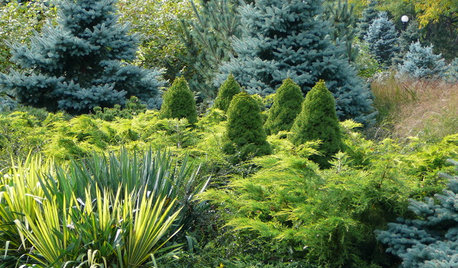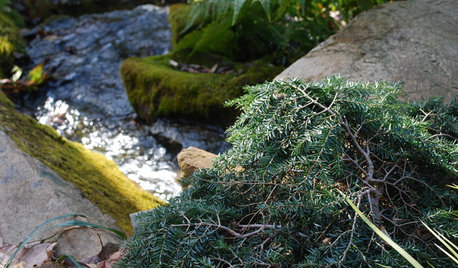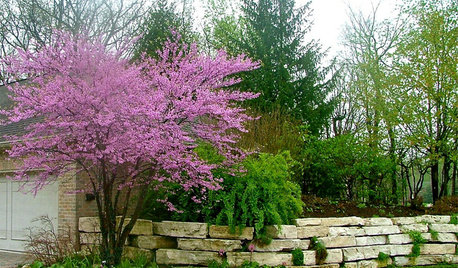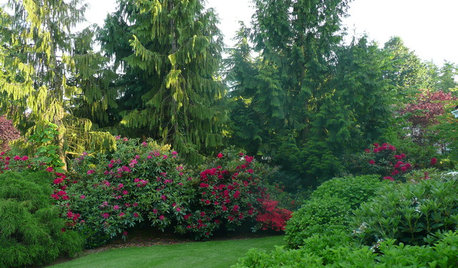Conifers and our US weather variability
firefightergardener
12 years ago
Related Stories

PLANTING IDEASDesigning With Conifers: Layers of Texture for Your Garden
Sharp and prickly or fine like ferns, richly textured conifers bring unexpected interest to the landscape
Full Story
GARDENING GUIDESDesigning With Conifers: Find the Perfect Fit for Your Landscape
Conifers range from fairy-garden size to 70 feet tall. Here’s how to decifer the plant tag for the perfect long-term fit in your garden
Full Story
MOST POPULARHouzz Call: Show Us Your Winter View!
Share pictures of your home and garden in winter — whatever your climate, architecture and plantings
Full Story
HOLIDAYSHouzz Call: Show Us Your Holiday Front Door
Lights, wreaths, action! If your front door plays a role in your yuletide decorations, we'd like to see it
Full Story
GARDENING GUIDESGreat Design Plant: Tsuga Canadensis ‘Bennett’
Bennett Canadian hemlock thrives in shade and provides sculptural interest in eastern U.S. gardens
Full Story
GARDENING GUIDES10 Top Mid-Atlantic Native Plants
Enjoy a four-season garden in the mid-Atlantic region with plants that will stand up to weather shifts, clay soil and the occasional deer
Full Story
GREEN BUILDINGInsulation Basics: Designing for Temperature Extremes in Any Season
Stay comfy during unpredictable weather — and prevent unexpected bills — by efficiently insulating and shading your home
Full Story
GARDENING GUIDESWhat Are Your Spring Gardening Plans?
Tearing out the lawn? Planting edibles? Starting from scratch? Tell us what you plan to change in your garden this year
Full Story
GARDENING GUIDESGreat Design Plant: Chamaecyparis Nootkatensis
Alaska cedar brings an element of sculpture to the garden
Full Story
LANDSCAPE DESIGNGet a Mediterranean-Style Garden Even Far From the Sea
Some lavender here, a water feature there, and your garden just might feel transported to a balmy seaside locale
Full StorySponsored





donn_
poopsko
Related Discussions
I love conifers but have part shade...any I can use?
Q
Variable Speed / TWo stage...come on!
Q
No quality variable speed hoods available to ship?
Q
Will a two-stage variable speed air handler improve 2nd floor cooling?
Q
poopsko
Embothrium
Embothrium
johnplace
hogmanay
salicaceae
johnplace
gardengal48 (PNW Z8/9)
in ny zone5
Embothrium
johnplace
gardener365
gardengal48 (PNW Z8/9)
franktank232
hogmanay
famartin
famartin
donn_
famartin
donn_
famartin
famartin
donn_
famartin
joeschmoe80
texjagman
joeschmoe80
firefightergardenerOriginal Author
joeschmoe80
Embothrium
davidrt28 (zone 7)
gardener365